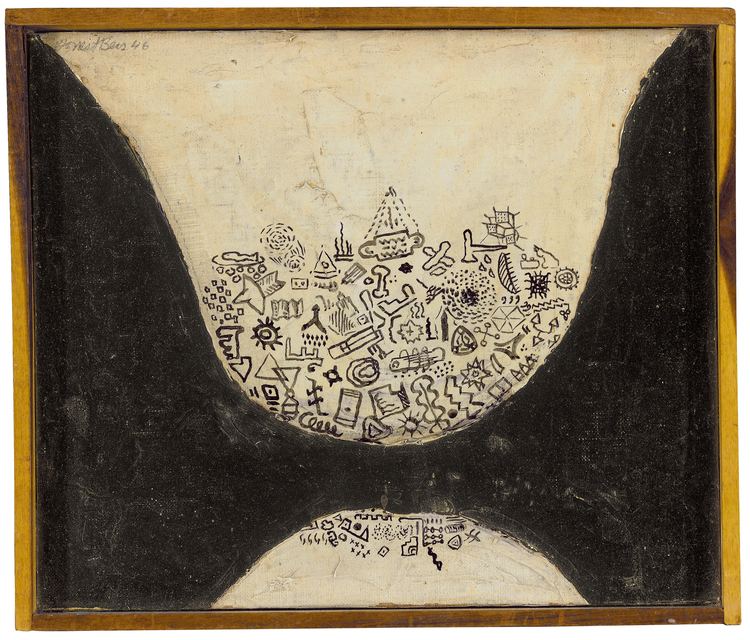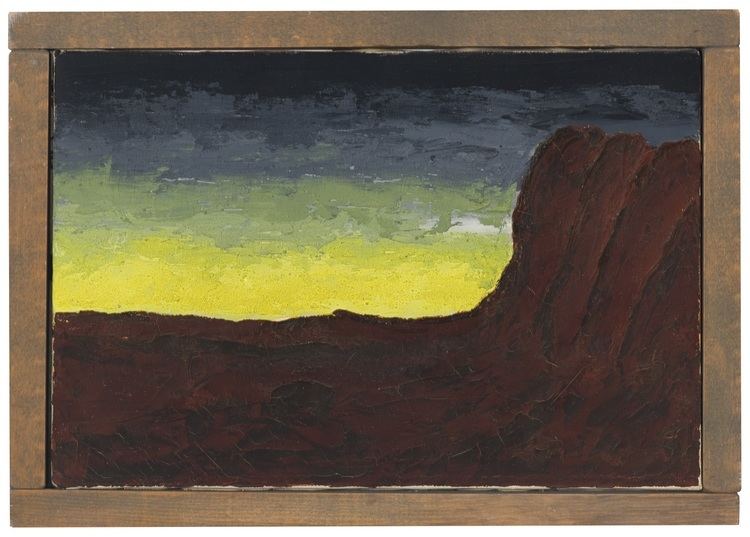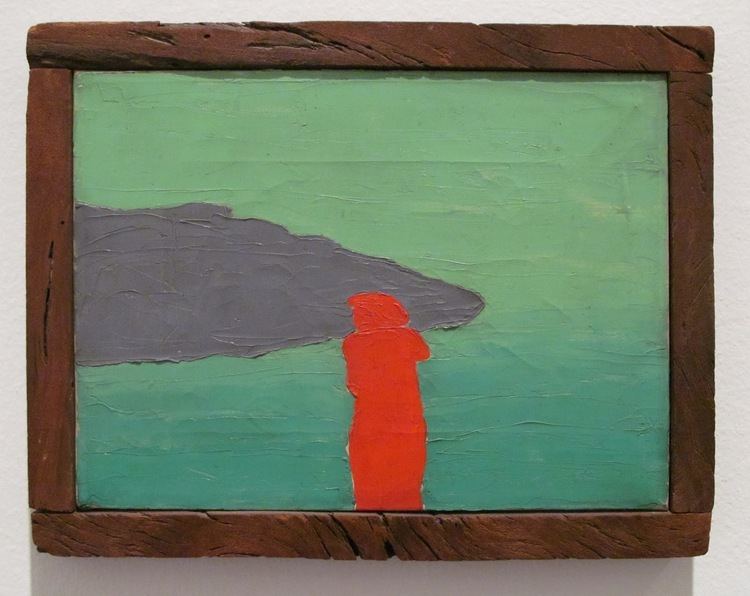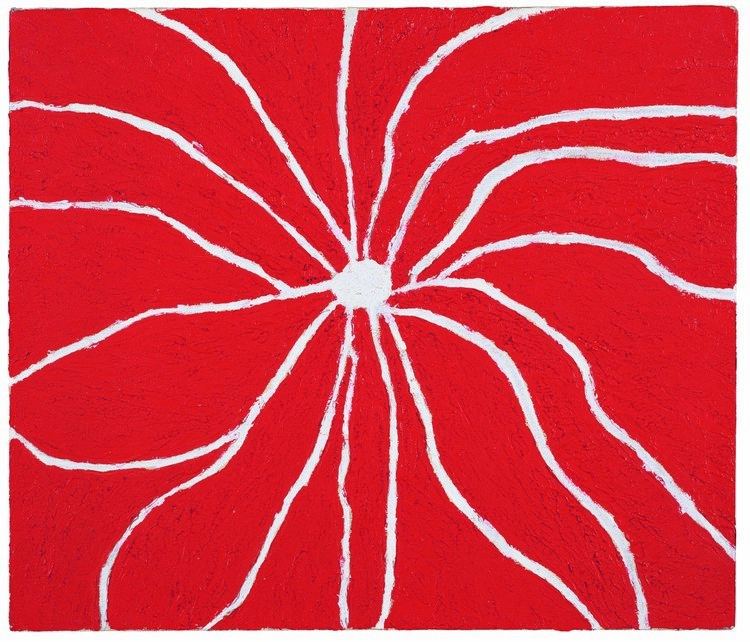Name Forrest Bess | ||
 | ||
Education University of Texas at Austin Artwork Dedication to Van Gogh, The Dicks, Mind Crystal | ||
Forrest bess at christie s and the whitney museum
Forrest Bess (October 5, 1911 – November 10, 1977) was an American painter and eccentric visionary. He was discovered and promoted by the art dealer Betty Parsons. Throughout his career, Bess admired the work of Albert Pinkham Ryder and Arthur Dove, but the best of his paintings stand alone as truly original works of art.
Contents
- Forrest bess at christie s and the whitney museum
- forrest bess key to the riddle preview
- Early life
- Painting
- Philosophy
- Surgery
- Death
- Legacy
- References

forrest bess key to the riddle preview
Early life

Born October 5, 1911, in Bay City, Texas, Bess picked up his love of art from his mother. His father worked in the oil fields and ran a bait fishing camp of the Texas coast in Chinquapin.

A semi-migrant childhood was followed by some years at college, where he began by studying architecture, but found himself diverted into religion, psychology, and anthropology, readings that would later inform his own radical theories. Dropping out of university in 1932, Bess worked for several years roughnecking in the Beaumont oil fields, and also made several trips to Mexico.
During World War II, he enlisted in the Army Corps of Engineers and was given the task of designing camouflage. He suffered a psychological breakdown and left the service.

After living for a while in San Antonio, he finally settled at his family's fishing camp at Chinquapin, near Bay City. Bess lived his life there in virtual isolation, on a strip of land accessible only by boat. "I try to tell myself that only by breaking completely away from society can I arrive at a reasonable existence."
Painting

He worked as a commercial fisherman, but painted in his spare time. He experienced visions or dreams, which he set down in his paintings. It was during this time he began to exhibit his works, earning one-person shows at museums in San Antonio and Houston. During his most creative period, 1949 through 1967, Betty Parsons arranged six solo exhibitions at her New York City gallery.
Bess was never comfortable for very long around other people, although he hosted frequent visitors to his home and studio at Chinquapin: artists, reporters, and some patrons made the trip to the spit of land on which Bess's shack stood. He did forge lasting relationships with a few friends and neighbors, and maintained years-long friendships and correspondence with Meyer Schapiro and with Betty Parsons.
But ultimately Bess preferred solitude, and his prolific activities as an artist, highlighted by limited notoriety and success, alternated with longs spells of loneliness, depression, and an ever-increasing obsession with his own anatomical manifesto.
Philosophy
In the 1950s, he also began a lifelong correspondence with art professor and author Meyer Schapiro and sexologist John Money. In these and other letters (which were donated to the Smithsonian Archives of American Art), Bess makes it clear that his paintings were only part of a grander theory, based on alchemy, the philosophy of Carl Jung, and the rituals of Australian aborigines, which proposed that becoming a hermaphrodite was the key to immortality. He was never able to win any converts to his theories or validation from the many doctors and psychologists with whom he corresponded. In his own home town of Bay City, he was considered something of a small-town eccentric.
Surgery
The events of the night in 1955 or the "late 1950s" on which Forrest Bess became a pseudo-hermaphrodite are not clear. According to Bess, he paid a local physician, Dr. R. H. Jackson, $100 and several paintings to perform the necessary surgery. Sex researcher Dr. John Money later corresponded at length with Bess and concluded that Bess, who exhibited an extensive knowledge of anatomy, medical procedures and painkilling drugs, had operated on himself and invented the doctor's participation to legitimize his experiment. The doctor apparently did attend Bess on the night in question. Jackson died shortly after supposedly performing a second operation on Bess in late 1961.
The anatomical facts, however, are clear. In accordance with the aborigine ritual, an opening or fistula was created beneath Bess's penis at its junction with the scrotum. This opening led through an incision in the urethra to the bulbocavernous urethra, a naturally enlarged section of the urethra that Bess insisted was capable of intense orgasmic stimulation. According to Bess's theories, the bulbous section of the urethra could, if sufficiently dilated, receive another penis in what would be the ultimate, eternally rejuvenating form of sexual intercourse. This physical manifestation of his theory never achieved the results he had hoped for and, ironically, this quest for immortality was the beginning of a slow decline in both his health and his creative output.
Death
Forrest Bess died on November 10, 1977, in a Bay City, Texas, nursing home from skin cancer at the age of 66.
Legacy
In the years following his death, Bess was nearly forgotten to history, but a 1981 solo show curated by Barbara Haskell at the Whitney Museum of Art helped revive his reputation as an artist. In the catalog, Haskell wrote, "Indeed, this painter's direct, almost primitive images, loaded with symbolic meaning and emotional content, are finding echoes in the so-called New Image painters. It may be that the show at the Whitney is the first step toward readdressing the import of his work." Bess' legacy was further enhanced in 1988, when Hirschl & Adler Modern exhibited 61 of his works.
In 1999, an award-winning 48 minute documentary film, Forrest Bess: Key to the Riddle, was produced by Chuck Smith and directed by Chuck Smith and Ari Marcopoulos. The film features interviews with Meyer Schapiro, Robert Thurman, and other friends and artists who knew Bess. In 2013, Smith turned the film into a book, Forrest Bess: Key to the Riddle, published by powerHouse Books. The book features a foreword by Robert Thurman.
As part of the 2012 Whitney Biennial, sculptor Robert Gober curated an exhibition of Bess' paintings from the late 1950s, as well as archival material.
In 2013 and 2014, the museum retrospective "Forrest Bess: Seeing Things Invisible" exhibited nearly 50 of his paintings and was curated by Clare Elliott, assistant curator of the Menil Collection.
Today, Bess is regarded as a unique phenomenon, an artist who cannot be grouped with any one school, but who answered solely and completely to his own vivid, personal vision. His best art consists of only about 100 small paintings, many with simple driftwood frames that he built himself. The majority of these paintings are in private collections, although the Menil Collection, Houston, the Museum of Contemporary Art, Chicago, Museum of Modern Art in New York, and Whitney Museum of American Art in New York have Bess paintings in their collections.
